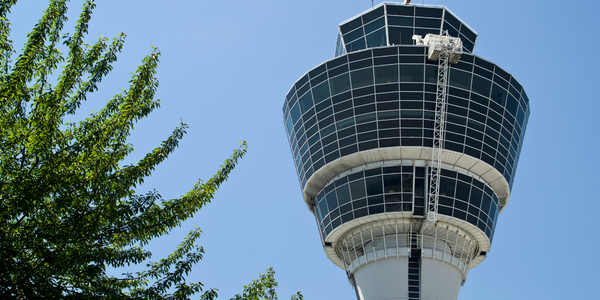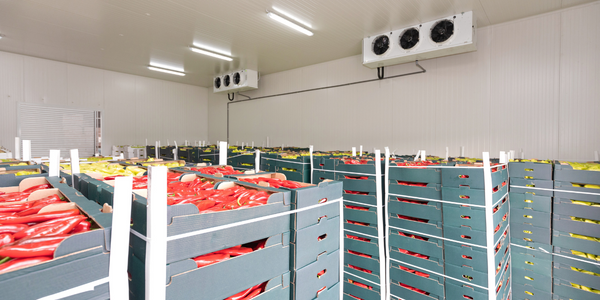Technology Category
- Infrastructure as a Service (IaaS) - Public Cloud
Applicable Industries
- Buildings
- Transportation
Applicable Functions
- Logistics & Transportation
- Product Research & Development
Use Cases
- Autonomous Transport Systems
- Vehicle-to-Infrastructure
Services
- Training
About The Customer
Acme Corp is a fictional company used in this case study as an example. It is a large organization with around 1,000 employees spread across Greater London. The company operates from five different offices. Like many organizations worldwide, Acme Corp has been grappling with the challenges posed by the Covid-19 pandemic, particularly in terms of ensuring safe commuting options for its employees as they return to work. The company is also considering consolidating its real estate portfolio by closing one of its offices. In addition, Acme Corp is looking to expand its workforce and is keen to attract new talent from outside of London.
The Challenge
The Covid-19 pandemic has led to a significant increase in remote working worldwide. As restrictions begin to lift, employers and employees face new challenges related to commuting safely and minimizing risk. This case study focuses on the imaginary example of Acme Corp, a company with around 1,000 employees across Greater London, operating from five different offices. The company needed to answer critical questions such as: What commute options are available for our employees if they wish to avoid using public transport? How can we efficiently allocate our employees between our multiple offices? How can we help employees avoid particularly busy stations or train lines? And how should we best consolidate the number of sites that we operate to minimize the impact on employees? These questions are not only relevant to Acme Corp but also to other organizations across various industries.
The Solution
To address these challenges, Acme Corp leveraged Alteryx, a data analytics platform, and a range of macros from TravelTime. The solution involved creating a workflow to calculate the journey times for each employee to each office by different transport types – Cycling, Driving, Public Transport, and Walking. This data was then used to identify opportunities for employees to commute to one of the five different offices by a method of transport other than public transport. For employees who still wished to commute by public transport, the data was used to allocate them to the nearest office. The solution also involved identifying high-risk individuals and ensuring that if they needed to travel using public transport, they were allocated to offices which avoided public transport routes that involved changing at busy stations. Finally, the solution helped Acme Corp decide which office to close based on accessibility by walking and cycling, and the potential impact on their ability to attract talent from outside of London.
Operational Impact
Quantitative Benefit

Case Study missing?
Start adding your own!
Register with your work email and create a new case study profile for your business.
Related Case Studies.

Case Study
Energy Saving & Power Monitoring System
Recently a university in Taiwan was experiencing dramatic power usage increases due to its growing number of campus buildings and students. Aiming to analyze their power consumption and increase their power efficiency across 52 buildings, the university wanted to build a power management system utilizing web-based hardware and software. With these goals in mind, they contacted Advantech to help them develop their system and provide them with the means to save energy in the years to come.

Case Study
Airport SCADA Systems Improve Service Levels
Modern airports are one of the busiest environments on Earth and rely on process automation equipment to ensure service operators achieve their KPIs. Increasingly airport SCADA systems are being used to control all aspects of the operation and associated facilities. This is because unplanned system downtime can cost dearly, both in terms of reduced revenues and the associated loss of customer satisfaction due to inevitable travel inconvenience and disruption.

Case Study
IoT-based Fleet Intelligence Innovation
Speed to market is precious for DRVR, a rapidly growing start-up company. With a business model dependent on reliable mobile data, managers were spending their lives trying to negotiate data roaming deals with mobile network operators in different countries. And, even then, service quality was a constant concern.

Case Study
Digitize Railway with Deutsche Bahn
To reduce maintenance costs and delay-causing failures for Deutsche Bahn. They need manual measurements by a position measurement system based on custom-made MEMS sensor clusters, which allow autonomous and continuous monitoring with wireless data transmission and long battery. They were looking for data pre-processing solution in the sensor and machine learning algorithms in the cloud so as to detect critical wear.

Case Study
Cold Chain Transportation and Refrigerated Fleet Management System
1) Create a digital connected transportation solution to retrofit cold chain trailers with real-time tracking and controls. 2) Prevent multi-million dollar losses due to theft or spoilage. 3) Deliver a digital chain-of-custody solution for door to door load monitoring and security. 4) Provide a trusted multi-fleet solution in a single application with granular data and access controls.

Case Study
Intelligent Building Automation System and Energy Saving Solution
One of the most difficult problems facing the world is conserving energy in buildings. However, it is not easy to have a cost-effective solution to reduce energy usage in a building. One solution for saving energy is to implement an intelligent building automation system (BAS) which can be controlled according to its schedule. In Indonesia a large university with a five floor building and 22 classrooms wanted to save the amount of energy being used.



